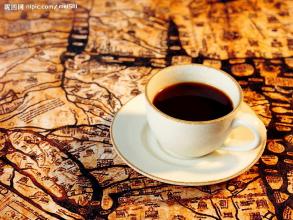Introduction to the flavor and taste characteristics of the fragrant coffee manor in Ecuador
In 1535, the Galapagos Islands were discovered by chance by Frei Thomas de Berlanga of Spain and others. Thomas was born in 1487 on the banks of the Duro River in the Spanish province of Soria. He was the fourth bishop of Panama at that time. He was ordered to Peru. When his ship set out from Panama on February 23, under the impact of a strong current, they were carried to an unknown sea in the outer ocean. On March 10, an island in the Galapagos Islands was discovered. With only two days of fresh water left on board, the sailors landed in lifeboats and found plenty of seals, turtles, giant tortoises that could carry people and viper-like iguanas on the island, but they could not find fresh water, so they headed for another larger island more than 20 kilometers away. As the wind was still not blowing, it took them several days to get there, the water ran out quickly, and they had to starve, including the horses on board. In the mid-15th century, among fishermen fishing in the Pacific Ocean of western South America, there were some legends about magical islands. It is said that the islands can sometimes be clearly seen from a distance, but disappear as the ship approaches; sometimes they look like a galleon, sometimes they take on the shape of a witch. Fishermen called the islands "the enchanted islands," thinking they might be ruled by demons like the banshees of the sea in the Odyssey. This island, known to fishermen as the "magic island," is today the Galapagos Islands. Ecuador is one of the few countries in South America that produces both Arabica coffee and Robaik coffee. But as the land available for arabica coffee trees dwindles, robert coffee production is increasing. The best Arabica coffee is grown in the Andes, especially in the Chanchamgo Valley, which divides into two mountain ranges extending from south to north into central Ecuador.
Flavor: balanced acidity, aromatic fragrance
Recommended Roasting Method: Medium to deep roasting, makes a good blend of coffee, suitable for many uses
Evaluation: General
Ecuadorian Giant Turtle Island Coffee Bean
Coffee treasures from the home of giant turtles
The best Ecuadorian coffee is grown on San Cristobal Island in the Galapagos Islands, where natural conditions are unique to the best coffee houses in the world. A cup of Galapagos coffee, like the beautiful scenery of the Galapagos Islands, is sure to impress you

Important Notice :
前街咖啡 FrontStreet Coffee has moved to new addredd:
FrontStreet Coffee Address: 315,Donghua East Road,GuangZhou
Tel:020 38364473
- Prev

Panamanian Coffee Bean Flavor Cupid Coffee Estate Features Panamanian Coffee Bean Flavor Cupid Coffee Estate
Panama is very suitable for the survival of butterflies because of its climate. Panama is also called Butterfly Country. Panama's butterflies are diverse, colorful and very beautiful. So one of Panama's most important specialties is butterfly specimens. Colorful butterfly specimens are very good decorations, hanging in the home is good. There are a lot of indigenous people living in Panama, and they have
- Next

Unique flavor of Puerto Rico coffee manor flavor and taste characteristics of boutique coffee beans
In Spanish, Puerto Rico means the port of wealth. The history of coffee in Puerto Rico dates back to 1736, when coffee seedlings were brought into the country by early Spanish settlers. In the 18th world, sugar cane was the main economic crop, so little attention was paid to it. At the beginning of the 19th century, the French began to move from the Mediterranean island of Corsica because of European politics.
Related
- Detailed explanation of Jadeite planting Land in Panamanian Jadeite Manor introduction to the grading system of Jadeite competitive bidding, Red bid, Green bid and Rose Summer
- Story of Coffee planting in Brenka region of Costa Rica Stonehenge Manor anaerobic heavy honey treatment of flavor mouth
- What's on the barrel of Blue Mountain Coffee beans?
- Can American coffee also pull flowers? How to use hot American style to pull out a good-looking pattern?
- Can you make a cold extract with coffee beans? What is the right proportion for cold-extracted coffee formula?
- Indonesian PWN Gold Mandrine Coffee Origin Features Flavor How to Chong? Mandolin coffee is American.
- A brief introduction to the flavor characteristics of Brazilian yellow bourbon coffee beans
- What is the effect of different water quality on the flavor of cold-extracted coffee? What kind of water is best for brewing coffee?
- Why do you think of Rose Summer whenever you mention Panamanian coffee?
- Introduction to the characteristics of authentic blue mountain coffee bean producing areas? What is the CIB Coffee Authority in Jamaica?

